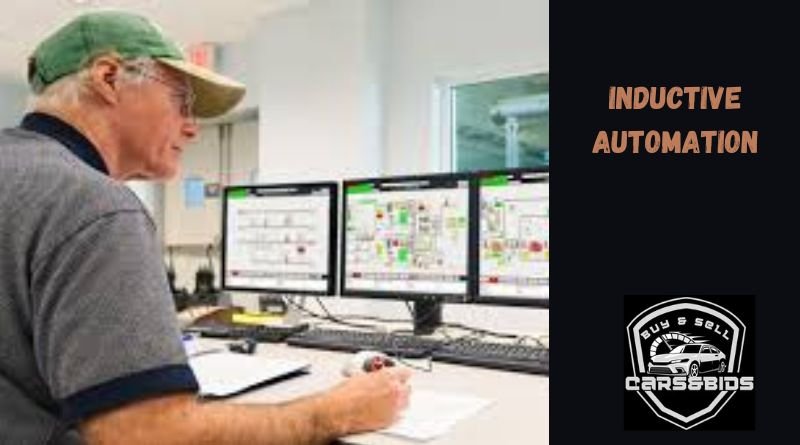In an increasingly digital world, industrial automation has become a critical factor for businesses to remain competitive and innovative. Inductive Automation, a key player in the field, is at the forefront of delivering cutting-edge solutions that help companies streamline processes, improve efficiency, and maximize productivity. With its flagship product, Ignition, Inductive Automation is transforming how industries handle their automation needs by providing flexibility, scalability, and powerful integration capabilities. This article delves into the role of Inductive Automation in revolutionizing industrial processes, the unique features of its solutions, and how its innovations are shaping the future of automation.

| Company type: | Private |
|---|---|
| Founded: | 2003 |
| Founder: | Steve Hechtman |
| Headquarters: | 90 Blue Ravine Road, Folsom, CA, United States |
|
Key people:
|
|
| Products: | Industrial Automation HMI – SCADA – MES Software |
The Evolution of Industrial Automation
Industrial automation has come a long way since its inception in the late 18th century during the Industrial Revolution. Initially, automation was centered around mechanization—using machines to replace human labor in repetitive or dangerous tasks. Over time, with the advent of computer technologies, automation evolved into something much more sophisticated, encompassing not only mechanical systems but also electronic and digital controls.
The introduction of programmable logic controllers (PLCs) in the 1960s marked a significant shift toward the digital age of automation. Since then, automation technologies have continued to evolve, incorporating innovations such as robotics, artificial intelligence (AI), and the Industrial Internet of Things (IIoT). Amid this rapid evolution, Inductive Automation has emerged as a pioneering force by offering solutions that not only keep pace with technological advancements but also push the boundaries of what is possible in the industrial sector.
Inductive Automation: A Game-Changer in the Industry
Founded in 2003, Inductive Automation has quickly gained recognition for its innovative approach to solving the challenges faced by industrial automation professionals. At the heart of Inductive Automation’s success is its revolutionary software platform, Ignition. Ignition is an industrial automation platform that provides comprehensive tools for building human-machine interfaces (HMIs), supervisory control and data acquisition (SCADA) systems, and other industrial applications.
What sets Inductive Automation apart from other players in the market is its commitment to openness, flexibility, and affordability. The Ignition platform is built on open standards, making it highly customizable and adaptable to the unique needs of different industries. Moreover, it offers an unlimited licensing model, which allows companies to scale their automation systems without the high costs associated with traditional licensing structures.
Key Features of Inductive Automation’s Solutions
Inductive Automation’s solutions stand out due to several key features that address the diverse needs of industries looking for robust and future-proof automation systems. These features are designed to enhance efficiency, reduce costs, and improve the overall performance of industrial operations.
- Ignition: A Unified Platform
Ignition serves as a comprehensive platform that integrates various aspects of industrial automation into a single, unified environment. From data collection to visualization and control, Ignition enables seamless connectivity between devices, systems, and processes. This unification allows for real-time monitoring and control of industrial systems, which is crucial for optimizing performance and ensuring operational reliability.
One of the biggest advantages of Ignition is its web-based architecture. Since Ignition operates on any device with a web browser, it eliminates the need for dedicated hardware and complex installation processes. This accessibility enhances mobility and flexibility for operators, allowing them to monitor and control systems from anywhere, at any time.
- Scalability and Flexibility
A critical factor in industrial automation is the ability to scale operations as business needs grow. Inductive Automation understands this, and its solutions are designed to scale effortlessly. Ignition’s modular architecture allows businesses to start small and expand their automation systems as needed, without the constraints of traditional software licensing.
Furthermore, Ignition is highly flexible. Whether a business operates in manufacturing, energy, water treatment, or any other industrial sector, Ignition can be tailored to meet specific requirements. Its support for multiple protocols, such as OPC-UA and MQTT, ensures that it can integrate with existing systems and accommodate future expansions.
- Cost-Effective Licensing Model
One of the biggest pain points for businesses looking to adopt advanced industrial automation technologies is the cost. Traditional software solutions typically come with expensive licensing models that limit how much a company can expand its automation infrastructure. Inductive Automation disrupts this model by offering unlimited licensing for its Ignition platform. This means that businesses can deploy as many devices, tags, or users as they need without incurring additional costs.
This cost-effective approach makes Inductive Automation an attractive option for companies of all sizes, from small manufacturers to large enterprises, who are seeking powerful and affordable automation solutions.
How Inductive Automation is Shaping the Future of Automation
As industries continue to embrace digital transformation, the role of Inductive Automation in shaping the future of automation cannot be overstated. With the increasing adoption of IIoT technologies, data analytics, and AI in industrial processes, companies need flexible, scalable, and innovative solutions to stay ahead of the curve. Inductive Automation’s solutions, particularly Ignition, are well-positioned to meet these demands.
The Role of IIoT and Edge Computing
The Industrial Internet of Things (IIoT) has become a major driver of change in the industrial automation landscape. By connecting devices and systems over the internet, IIoT enables real-time data exchange and analytics, leading to smarter decision-making and improved efficiency. Inductive Automation plays a crucial role in enabling IIoT solutions through its open and scalable platform.
Ignition’s ability to integrate with IIoT devices allows companies to collect, visualize, and analyze data from across their operations. This data can then be used to optimize processes, predict maintenance needs, and enhance overall productivity. Additionally, Ignition supports edge computing, which enables real-time processing of data at the source, reducing latency and improving response times.
Embracing Artificial Intelligence and Machine Learning
Artificial intelligence (AI) and machine learning (ML) are increasingly being integrated into industrial automation to improve decision-making and predictive capabilities. Inductive Automation’s platform is designed to support these advanced technologies by providing the necessary data infrastructure and integration tools. With Ignition, companies can harness the power of AI and ML to optimize processes, reduce downtime, and enhance the overall performance of their automation systems.
Cybersecurity and Future-Proofing Automation Systems
As industrial automation systems become more connected and data-driven, the importance of cybersecurity cannot be ignored. Inductive Automation is acutely aware of the security challenges that industries face and has integrated robust security features into its platform. Ignition’s use of encrypted communication protocols, secure authentication, and user access controls ensures that industrial systems remain protected from cyber threats.
Moreover, the open architecture of Inductive Automation’s solutions allows businesses to future-proof their automation systems. As new technologies emerge, Ignition can easily integrate with them, ensuring that companies can stay at the forefront of innovation without needing to overhaul their entire infrastructure.
Conclusion: The Future of Industrial Automation with Inductive Automation
Inductive Automation is leading the charge in transforming the industrial automation landscape with its innovative and flexible solutions. The company’s flagship product, Ignition, is not just a SCADA platform; it is a comprehensive industrial automation solution that empowers businesses to take control of their operations in a way that is scalable, cost-effective, and future-proof. By embracing open standards, unlimited licensing, and support for cutting-edge technologies like IIoT and AI, Inductive Automation is well-positioned to shape the future of industrial automation.
As industries continue to evolve and embrace digital transformation, the demand for flexible and powerful automation solutions will only grow. With its commitment to innovation and customer success, Inductive Automation is poised to remain a key player in the industry, helping businesses navigate the challenges of the future while reaping the benefits of advanced automation technologies.
Also Read:




